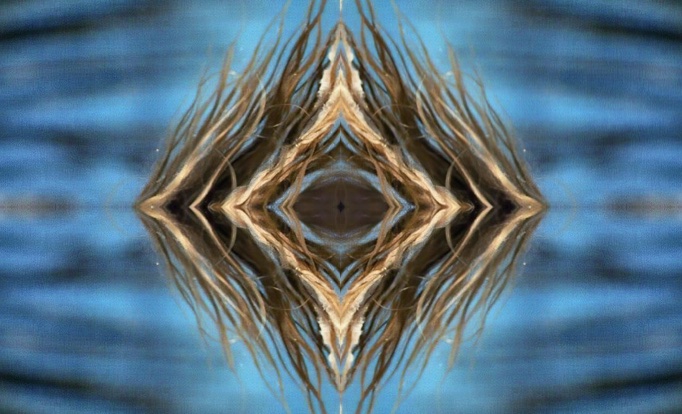When I summarized the view that emerges from the individuation essay, I listed a number of respects in which the notion of “personality” on which it is based is different from our everyday notion of a person. One of these was that a psychological individual (according to Jung, in the individuation essay) partly consists of unconscious, collective structures which are diffused throughout the population, and even might be embedded in the cultures and institutions of societies.

Jung himself was well aware of this corollary, and the indeterminate character it implied for the notion of an individual. In a later essay (from 1950), he mentions
[…] das Ganze des Menschen, das aus dem Bewußten und dem Unbewußten besteht und daher unbestimmt weit über das Ich hinausreicht.
GW IX/I, § 541; my emphasis.
Similarly, in Aion (published in the same year), he again emphasizes this characteristic (although here we have to add two qualifications):
Das Selbst [ist] ein Archetypus, der auch immer eine Situation darstellt, in welcher das Ich enthalten ist. Daher kann, wie jeder Archetypus, auch das Selbst nicht im Raume eines Ichbewußtseins lokalisiert werden, sondern verhält sich wie eine den Menschen umgebende Atmosphäre von einer räumlich wie zeitlich nur unsicher abzugrenzenden Erstreckung.
GW IX/II, § 257.
The first qualification is that Jung here talks about the Self, i.e., an archetypal pattern representing the individual, rather than about the psychological individual itself; the second is that what accounts for the indeterminate character of the individual here is, not the particular archetype of the Self, but its archetypal nature (“wie jeder Archetypus”) — or in other words, once we admit a share of archetypes (collective contents which are necessarily unconscious) in the individual, we arrive at the corollary of the indeterminate character, and for this it doesn’t matter which archetypes (Self or others) these are.
When we look closer at the quote above, we can also observe that Jung is struggling with the implications of terminology choices here. That terminology is based on a spatial metaphor: namely, that of containment. Rather than thinking of the Self as “contained in” subjective consciousness, Jung says, we should think of the Self as containing the “I”. But of course the chiasmus is not quite as clear-cut as that summary suggests. There are multiple conceptual fields here, each of which has a spatial metaphor at its (terminological) roots, and therefore some similarity with the others. Let’s sort them apart.
First, it’s not the Self archetype that contains the “I”; rather, it’s the situation represented by the Self which contains the “I”. What the Self archetype represents is the psychological individual as a whole, including both conscious and unconscious components, and having gone through the individuation process: a kind of ideally balanced totality of all elements of the psyche. And if that is the “situation” represented by the Self (i.e. symbolized by all those symbols from mandalas to the Christian figure of Christ, as Jung claims), then the “I” is contained in that a fortiori — virtually by definition, too, since of course that view of the Self is something posited by Jung theoretically, a speculative concept designed to contain, among other things, the conscious “I”.
Secondly, the Self (and every other archetype) cannot be “localized” in the “space” of the ego consciousness. Here Jung is not speaking about the situation represented by the Self, but about the archetypes themselves, the psychological patterns that make up the collective unconsciousness. And although these are, just as consciousness, something psychological, they are not contained in consciousness since, as Jung frequently insists, the psychological spans more than just the conscious.
Note however, thirdly, that the formulation about the “Raum des Ichbewußtseins” is ambiguous — as genitive phrases frequently are. Rather than thinking of consciousness as a space and thinking of archetypes and the Self as “outside” that space, as if plotting both the conscious space and the archetypes in a Venn diagram, we might understand the “space” of consciousness as the situational space in which consciousness finds itself. Remember that consciousness, by Jung’s definition, is the totality of all psychological phenomena related to a subject; as seen from the “I”, its subjective center, this spans a space (or subjective field), and what the quote says is that the Self and any other archetypal pattern cannot be located in that: in other words, that they are not something related to the “I” — which is simply another way of saying that they are (again, practically by definition), unconscious.
And finally (fourthly), Jung then describes the archetypal patterns, including that of the Self, as an “atmosphere” surrounding a human being (or, possibly, “man as such”? — for “den Menschen” could be read in both these ways…). That metaphorical expression (“atmosphere”) is designed to reflect the indeterminacy Jung then posits, which is both spatial and temporal. But what can be determined spatially and temporally, of course, are not parts of the psyche (and their containment or otherwise in each other, resp.), but psychological episodes and contents. For instance, episodes of memory can be ascribed to a particular human being, as happening at a certain spatiotemporal location (roughly, where and when that person happens to be when they have them); and of course, a memory episode in turn can in its content refer to locations in space and time, quite different ones in fact, too.
But by saying that the archetypes surround “den Menschen” in a spatiotemporally uncertain stretch, Jung also claims that, in contrast to such episodes of memory, psychological phenomena connected with an archetypal pattern extend further than anything contained in conscious episodes such as these memories. A simple example for this would be if a person you know projects an archetypal figure onto you (say, the Evil King), and you begin to unconsciously act in alignment with the patterns typical for that figure (i.e., by way of countertransference). Such behavior would be unconscious, and it would partly be located in episodes spatially and temporally disconnected from any subjective content you are aware of — they are, in Jung’s terms, part of that “indeterminate atmosphere”.



